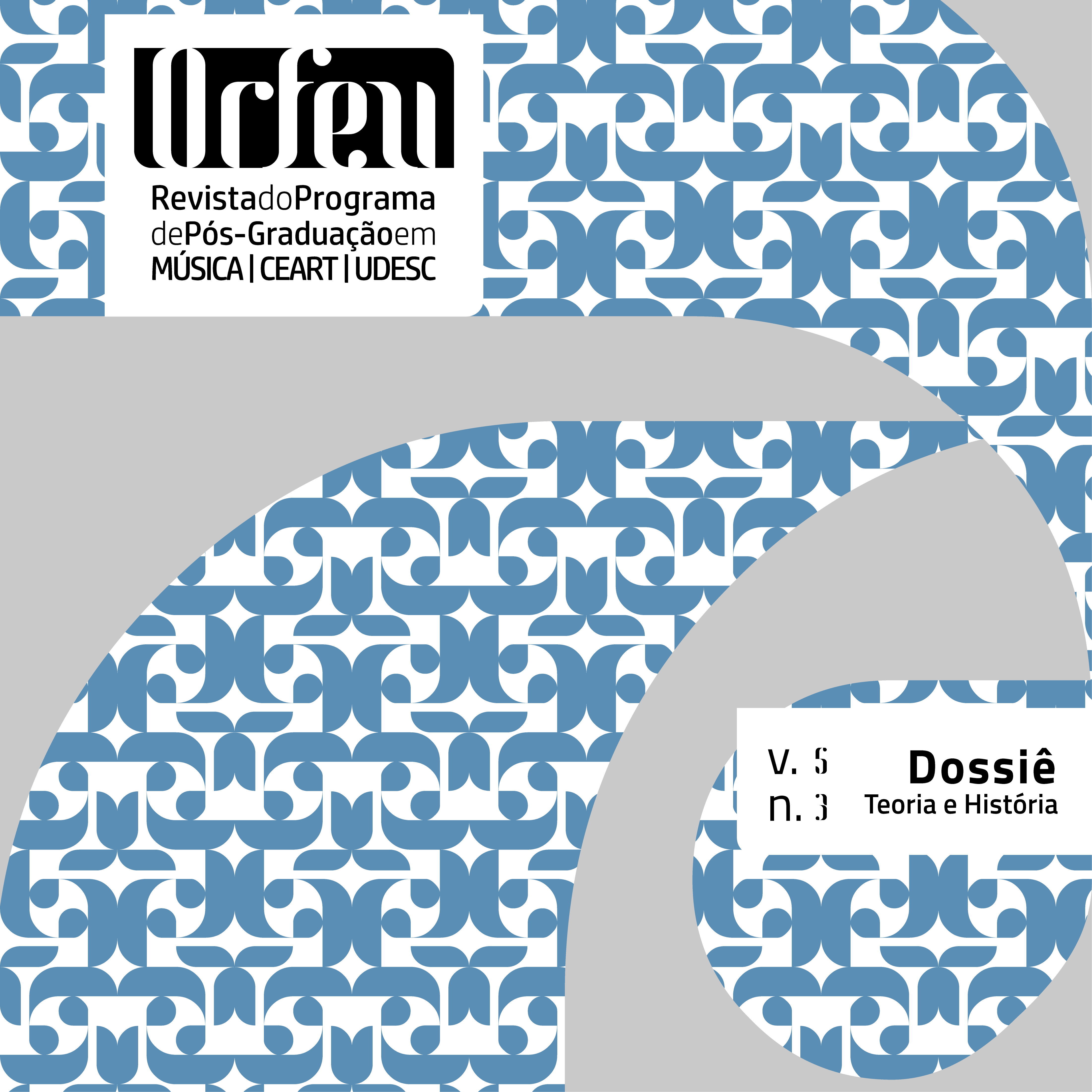O tempo, o ritmo e o pensamento musical
DOI:
https://doi.org/10.5965/2525530405032020025Parole chiave:
Tempo, tempo musical, ritmo, métrica, duraçãoAbstract
Compositores do início do século XX encontraram meios de transcender a rítmica métrica, em formas de abordar a dimensão temporal da música que reverberam experiências rítmicas anteriores à consolidação da métrica e da harmonia tonal. Percorrendo esses momentos históricos da música, revelam-se maneiras pelas quais se entrelaçam no devir histórico o tempo e o pensamento musical. Exemplos de partituras atestam diferentes esforços de transcender a rítmica e a métrica fraseológica.
Downloads
Riferimenti bibliografici
AGOSTINHO, Santo. De Musica. Paris: Éditions du Sandre, 2009.
BARRAQUÉ, Jean. Debussy. Paris: Seuil, 1994 [1962].
BEDA. De arte metrica et de schematibus et tropis [c. 710]. In: COPELAND, Rita; SLUITER, Ineke. Medieval Grammar and Rhetoric: Language Arts and Literary Theory, AD 300 -1475. Oxford: Oxford Scholarship Online, 2015.
COCLICO, Adrien Petit. Compendium musices, 1552. Disponível em: <https://archive.org/details/imslp-musices-coclico-adrianus-petit/page/n43/mode/2up>. Consultado em maio de 2020.
DELEUZE, Gilles. O Bergsonismo. Rio de Janeiro: 34 Letras, 1999.
GUBERNIKOFF, Carole. Música e Representação, das durações aos tempos. Tese de doutorado. Rio de Janeiro, UFRJ, 1993.
MOLDENHAUER, Hans. Anton Von Webern: a Chronicle of His Life and Work. New York: Knopf, 1979.
MURRAY, Alexander. Reason and Society in the Middle Ages. Oxford: Clarendon Press, 2002 [1978].
PLATÃO. Timeu-Critias. Coimbra: CECH, 2011.
SCHMITT, Jean-Claude. Les rythmes au Moyen-Âge. S/l: Gallimard, 2016.
ZARLINO, Gioseffo. Istitutioni Harmoniche, Veneza, 1558. Disponível em: < https://gallica.bnf.fr/ark:/12148/bpt6k58227h/f2.image>. Consultado em maio de 2020.
Downloads
Pubblicato
Come citare
Fascicolo
Sezione
Licenza
Copyright (c) 2020 ORFEU

TQuesto lavoro è fornito con la licenza Creative Commons Attribuzione 4.0 Internazionale.






